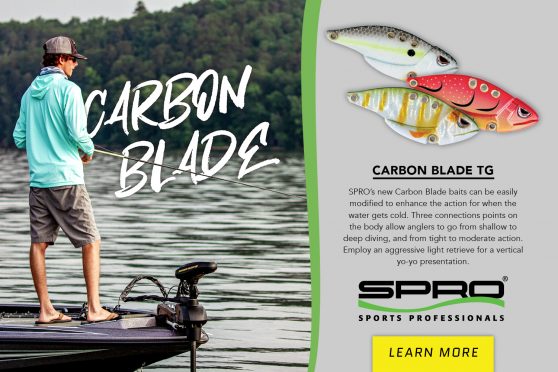Shore ‘Nuff River Walleyes
SHARE THIS POST
 Winter and early spring offer abundant shore fishing access to river walleyes, says author Dave Csanda.
Winter and early spring offer abundant shore fishing access to river walleyes, says author Dave Csanda.
River walleyes provide some of the earliest open-water fishing opportunities of the year. Fish make upriver pre-spawn movements, either collecting in the general vicinity below dams, or moving upstream to gather along rocky river shorelines or in shallow rock/gravel areas in lakes. This seasonal migration creates the largest concentration of fish of the year.
Anglers with boats ply classic areas within a mile or two below dams, including holes, wing dams, eddies, shorelines, shoals, bridge pilings, tributary intersections, midriver channels, backwaters and more. Mobility provides access to a wide array of fishing locales.
That doesn’t mean, however, that those on foot patrol are shut out of the action. Far from it. In fact, spring allows shore-bound anglers to enjoy the best walleye fishing opportunities of the year. To turn the odds in your favor, focus your efforts in high-percentage fishing locales where numbers of walleyes are likely to collect or at least swim past you, within casting distance.
This requires foot access to productive fishing spots. The areas below dams generally have at least one boat access where you can park your car and walk along shore to reach some of the spots mentioned above. Rather than envying boaters, be content to fish good spots you can reach with a good pair of waterproof boots. Gently sloping shorelines or shallow shoals may even permit exploration with pair of waders, allowing you walk a distance out into the river to reach within casting distance of deeper water.
Assuming you remain safely on shore, you want to position in areas where fish come to you. Your eyes become your best fishing tools. Read the river’s surface, noting lines and disturbances that reveal what’s happening below. A series of riffles, for example, indicate current flowing across shallow rocks and rubble beneath the surface. Walk to a position where you can cast to the deeper pool that lies just downriver.
Current sweeping up along the steep outside river bends has the deepest water in the area. Walk along shore, casting out into the depths.
Rocky points and the bases of wing dams indicate areas where active fish should lie just upstream of the visible current disturbance on the surface. Cast well upstream of the area and let your bait drift down-current to brush up along it.
Are you enjoying this post?
You can be among the first to get the latest info on where to go, what to use and how to use it!
Stretches of rocky shoreline may host walleye spawning once water temps rise into the low 40s. If rocky areas are relatively small, park in place and work it over with earnest. If the rocky stretch runs for some distance along shore, walk the entire area, casting, paying special attention to areas where the bottom changes from rock to rubble, or gravel to sand.
You’ll see lots of folks fishing off bridges, and along the riprap at their bases. These are all potentially good. As are tributary intersections with the main river. The edge where the two flows mix—often indicated by a change in water color as well a telltale line on the surface—should be the focus of your casts.
In metro areas, streets dead-end at the river. Park and walk down to the shore, where allowed. Look for riprap, and for pipes/drains where warmer runoff water flows into the river.
Public park areas often provide good foot access to long stretches of shoreline. In such areas, much of the shoreline brush is often cleared, providing easy foot access along shore. Chances are you’ll discover well-worn foot paths along the bank.
If toting a minnow bucket through long stretches of brush and brambles appears difficult, carry a 7-foot, medium-action spinning rod and reel spooled with 8-pound-test line, and a pocketful of lightweight jigs and soft plastics. Try 3- to 4-inch Mister Twister grubs, 4-inch ringworms, B Fish N AuthentiX RibbFins or other very flexible softbaits that will maintain their action, even in very cold water. Dress them on 1/8- to 1/4-ounce jig heads, sufficient to reach bottom in areas of reduced flow. Cast out, let the bait reach bottom, pause, and then lift it a foot or two to slide it along. Ideally, the right combo of jig weight and plastic body will slowly tumble along in the current, providing a seductive target for walleyes as it drifts by. Experiment with brighter colors like orange and chartreuse if the water is dirty.
Walleyes become very active during the witching hour just before sunset. Toss a neutrally buoyant minnow bait like a Rapala Husky Jerk, using slow pumps of the rod tip, followed by pauses while you reel up slack. Bring a long-handled landing net, just in case.
Find more helpful walleye fishing tips in every issue of MidWest Outdoors, available by subscribing on our website.
MWO
SHARE THIS POST
You may also like...
Nothing found.
Did you enjoy this post?
You can be among the first to get the latest info on where to go, what to use and how to use it!
Dave Csanda
Dave Csanda has enjoyed 40 years in the fishing communications industry at In-Fisherman, Angling Edge and now, as editor of MidWest Outdoors. He is an inductee of both the Minnesota and National Fresh Water Fishing Halls of Fame.
